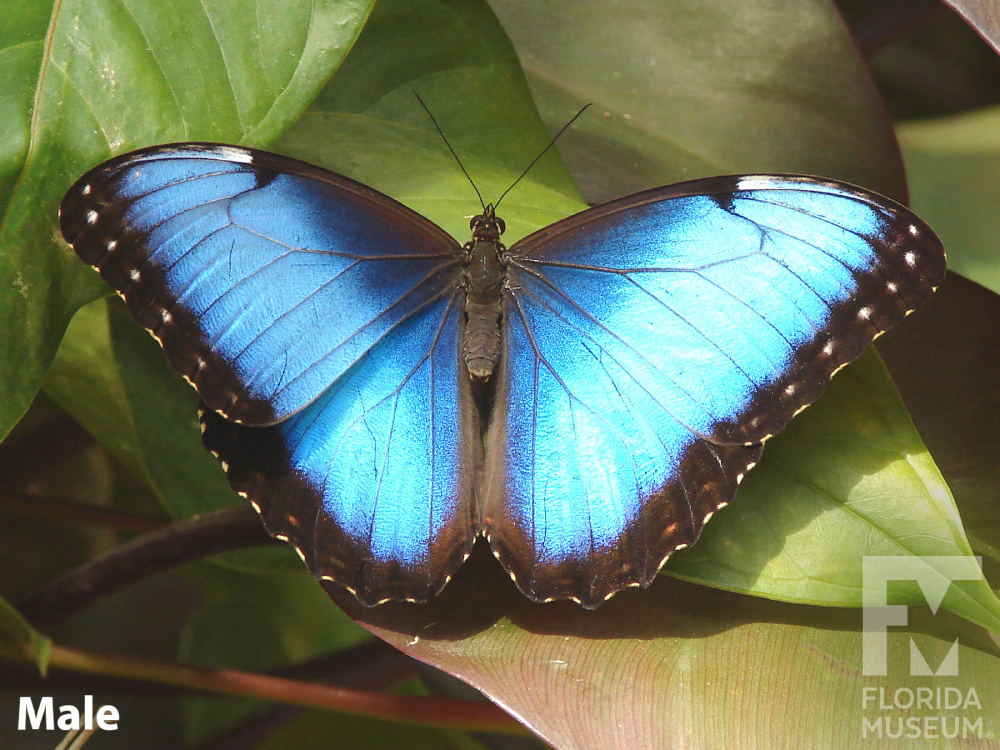The Blue Morpho Butterfly (Morpho menelaus) is one of the most mesmerizing and iconic insects found in the tropical rainforests of Central and South America. Renowned for its iridescent blue wings, this butterfly is not only a symbol of natural beauty but also a subject of scientific interest due to its unique biological and ecological characteristics.
Taxonomy and Classification
The Blue Morpho Butterfly belongs to the family Nymphalidae, which is the largest family of butterflies with over 6,000 species. Within this family, it falls under the subfamily Morphinae. The genus Morpho consists of around 30 species, with Morpho menelaus being one of the most recognized.
Physical Description
The Blue Morpho is celebrated for its large, vivid blue wings that can span from 5 to 6 inches (12.5 to 15 cm) in width. The stunning blue coloration is not due to pigments but rather to the microscopic scales on the wings that reflect light, a phenomenon known as structural coloration. When viewed at different angles, the wings can shimmer with an iridescent blue that seems almost electric. The undersides of the wings are brown with a pattern of eyespots, providing camouflage against predators when the wings are closed.

Habitat and Distribution
Blue Morpho Butterflies are native to the tropical rainforests of Central and South America, particularly in countries like Brazil, Costa Rica, and Venezuela. They prefer humid, lowland rainforests but can also be found in secondary forests and along rivers and streams.
Life Cycle and Behavior
The life cycle of the Blue Morpho, like all butterflies, includes four stages: egg, larva (caterpillar), pupa (chrysalis), and adult. Female Blue Morphos lay their eggs on the leaves of host plants, such as species of legumes. The caterpillars are reddish-brown with patches of green and white, and they feed voraciously on the leaves of their host plants. The chrysalis stage is crucial for transformation, with the pupa usually green or brown, blending in with the foliage. Upon emerging, the adult Blue Morpho spends its time feeding on fermented fruit and tree sap. The adults are diurnal and are most active during the morning.
Ecological Role
Blue Morphos play a significant role in their ecosystems. As caterpillars, they help control plant growth by feeding on leaves. As adults, they aid in pollination and serve as a food source for a variety of predators, including birds, reptiles, and small mammals. Their presence is indicative of a healthy, biodiverse environment.
Threats and Conservation
Despite their beauty, Blue Morpho Butterflies face several threats. Deforestation and habitat destruction are the most significant, as they lead to the loss of essential resources. Additionally, climate change poses a threat by altering the delicate balance of their rainforest habitat. Illegal collection for the butterfly trade also endangers their populations. Conservation efforts are underway to protect these magnificent butterflies. Several national parks and reserves in Central and South America have been established to safeguard their natural habitats. Sustainable tourism and butterfly farming also contribute to conservation by raising awareness and reducing the pressure on wild populations.
Cultural Significance
The Blue Morpho Butterfly has captured the human imagination for centuries. In many cultures, it symbolizes transformation, beauty, and the delicate balance of nature. It appears in various forms of art, literature, and folklore, often representing the ephemeral nature of life and the importance of preserving natural beauty.









